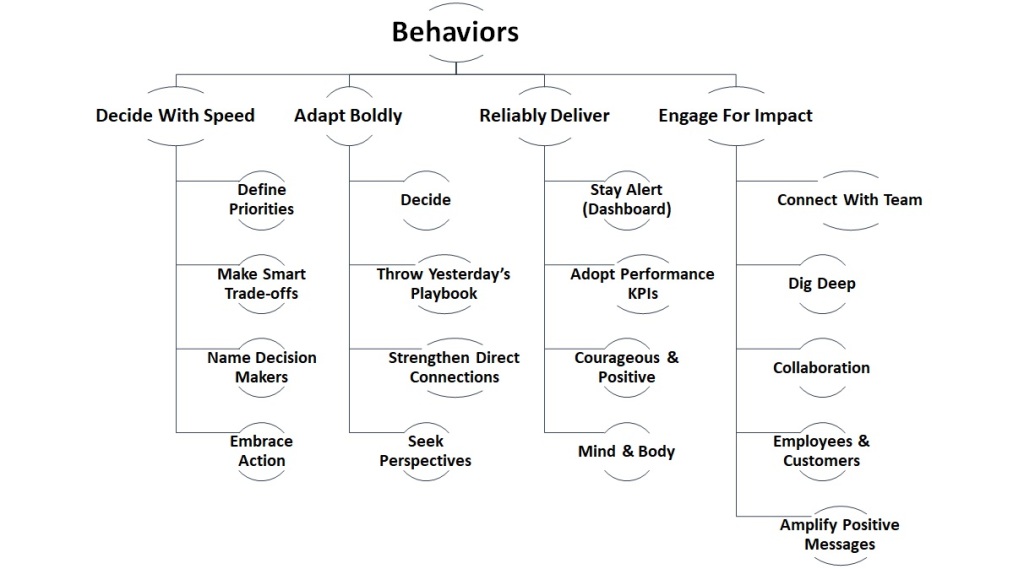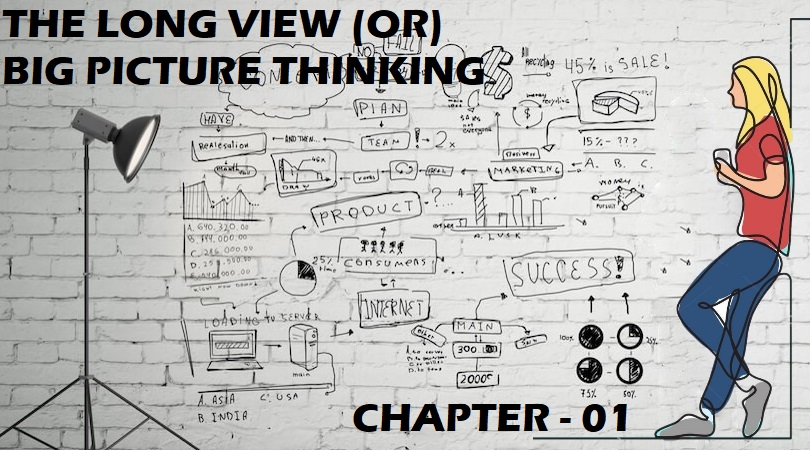
Most people fall under either of the two main types of thinking paradigms- big picture or detail-oriented. The big picture thinker usually keeps coming up with ideas of what the ideal world would look like. The detail-oriented thinker on the other hand mostly thinks pragmatically and is organized.
A Story:
Around 1959 or 1960, Dashrath Manjhi, a laborer in India’s Gehlaur village lost his injured wife because the nearest hospital was about 45 minutes away. 22 years later, the same man had carved a 10-meter long path through the rocky ridge – all with a hammer and chisel – that chopped the travel time to 15 minutes.

Manjhi is an extreme example of seeing the big picture — instead of getting overwhelmed by the details of how he was going to get it done, he focused on the broader issue at hand: he didn’t want anyone else to suffer his wife’s fate. So, he worked tirelessly for years to prevent that from happening again.
What Is Big Picture Thinking?
Big picture thinking is the ability to grasp abstract concepts, ideas and possibilities. Big picture thinkers emphasize the system in which they are operating. This includes looking into various stakeholders such as customers, employees and investors but also competitors, social trends and future technological disruptions.
A big picture thinker is someone who mostly thinks of issues from a broader, overview-type perspective. When dealing with any project, they focus on the overall importance of the project and the major steps required to execute it. When big picture thinkers focus on details, they get tired easily. It’s the big picture that energizes and keeps them going. These types of people are often called visionaries or dreamers. They’re usually full of ideas, great at outlining how things could change, and what needs to be done to make the world a better place. Most inventors are big picture thinkers.
Imagine driving on the Howrah bridge at Calcutta (or any bridge). Do we look at the left and the right only? Hopefully not. We would have trained ourselves to cover both our left and right sides, as well as look far ahead in front of us. (If we only focused on a tiny word on the bumper sticker of the vehicle directly in front of us, we risk getting into an accident.) That’s essentially what big picture thinking is — looking at the entirety of a plan or situation.
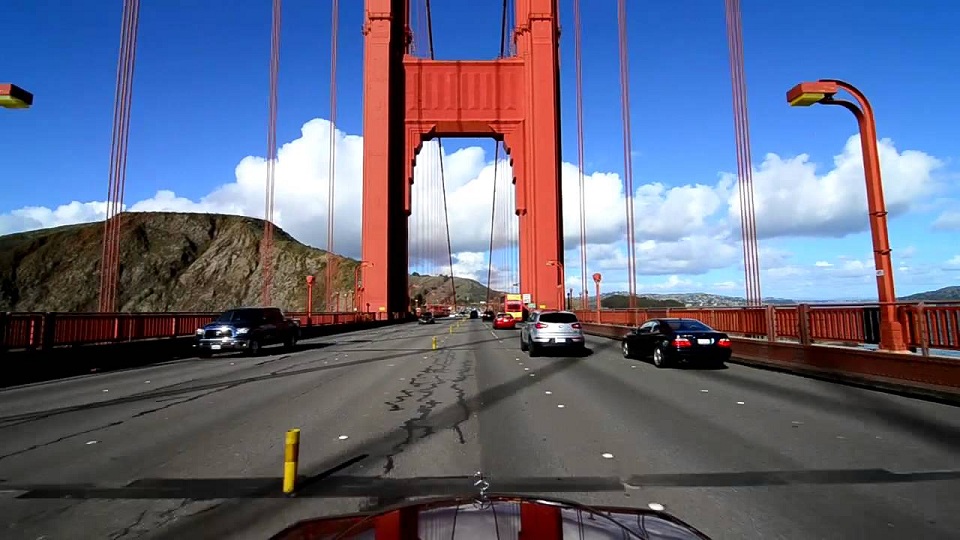
Seeing the big picture means seeing the whole. The ability to comprehend the context of the matter and the system that is at work. We get to grips with the scope and focus on it, strategizing what will work and what will not. Put another way, big picture thinking is the ability to envision something.
In contrast, a detailed oriented person delves into the specifics of a project or process. In doing so, they may lose sight of the plan or the big picture. But, this does not mean that one thinking modality is right and another wrong. Instead, they are both necessary to function effectively.
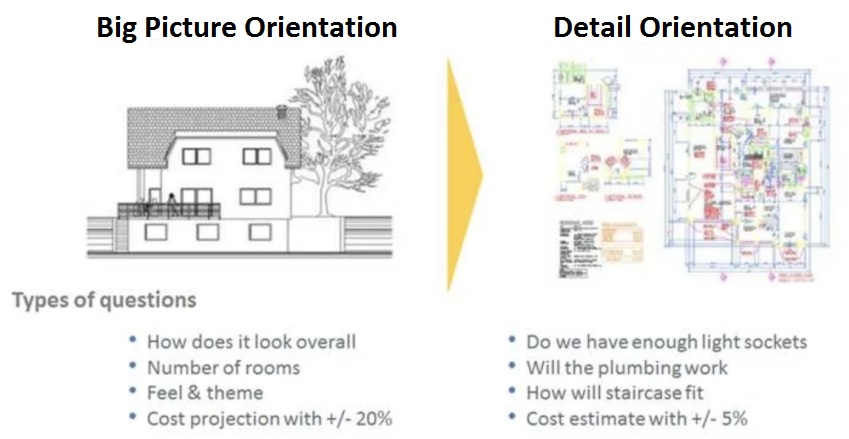
The Importance Of Big Picture Thinking
“Take a step back”, “Look at the big picture”, “Think about it in the grand scheme of things”. These snippets of advice tend to go in one ear and out the other if we are naturally a detail-oriented person. Often, they can feel like a waste of time – why invest in all that fluffy thinking when there’s just so much to actually get done?
But scientific research has revealed that big picture thinking is linked to venture success for entrepreneurs. These entrepreneurs are 30-48% more likely to think in broad terms than the rest of us. It is not easy to encourage big picture thinking. It takes a ton of work and mental reminders such as, “how will this matter to me in 3 days, 3 years, 3 decades…”
We might be wondering, ‘what is the benefit of having a solid idea of the big picture?’ While both big picture vs detail-oriented thinking are crucial, they also complement each other. Zooming in on the details only can be a bit messy to deal with. By thinking big, we are less likely to fret over the details that won’t matter in the long run. Not to mention, a big picture person is likely to see how an obstacle impacts the big picture and how that can turn into an opportunity – a real plus if we are leading a team.
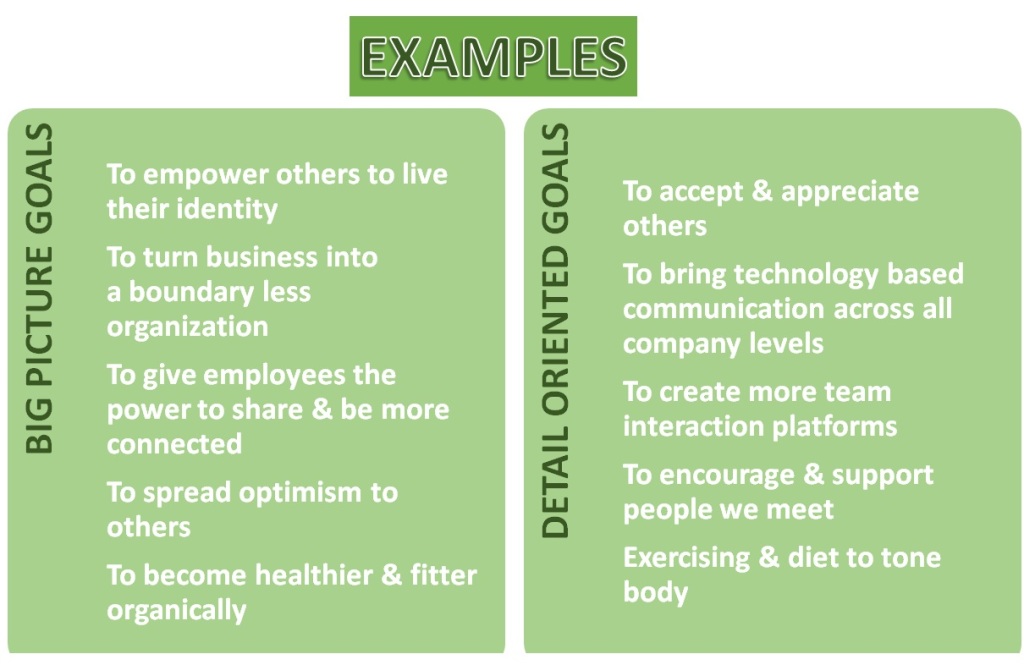
Both big picture thinking and detail thinking are important. Anyone who is prone to be in one or other mode by default will limit their ability to contribute to the whole picture.
Detail Oriented Or A Big Picture Thinker- The Difference
We can get a better understanding of big picture vs detail-oriented when we look at them as “universal versus specific thinking.” Some common words and phrases are:
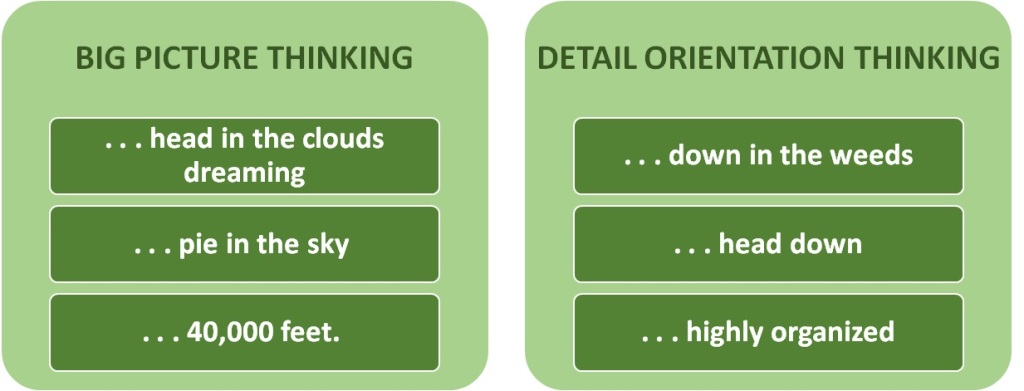
One way to find out whether we are a big picture thinker or a specifics’ person is seeing what we tend to focus on naturally. Do we look at the detailed ins and outs of a project?
Perhaps we give so many details in our reports that our manager finds it annoying?
Or, do we tend to keep a bird’s eye view on things, and feel frustrated when working on projects where we can’t see how it connects to a broader plan? When we look closely, we see that both types of thinking are needed in a workplace.
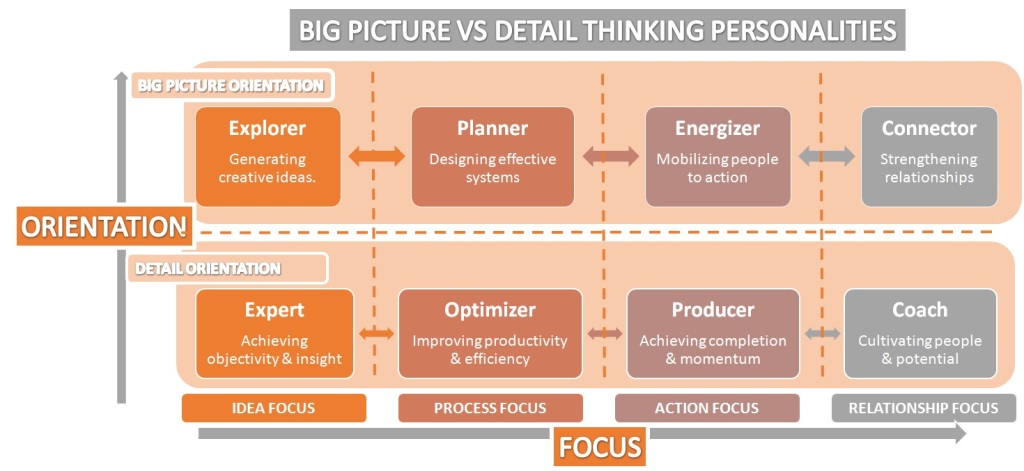
***To be continued in Chapter 02 (Identifying the Different Approaches, The Balance: Big Picture & Detailed Orientation- Components in Business, Strategies Towards a Big Picture Focus, Self Reflection- The Key) Link to Chapter -02:
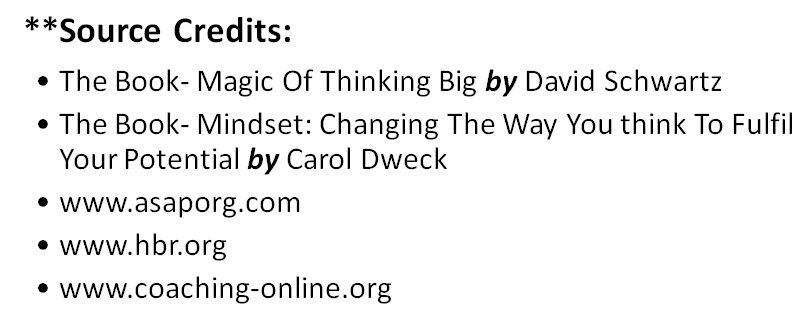
Content Curated By: Dr Shoury Kuttappa


